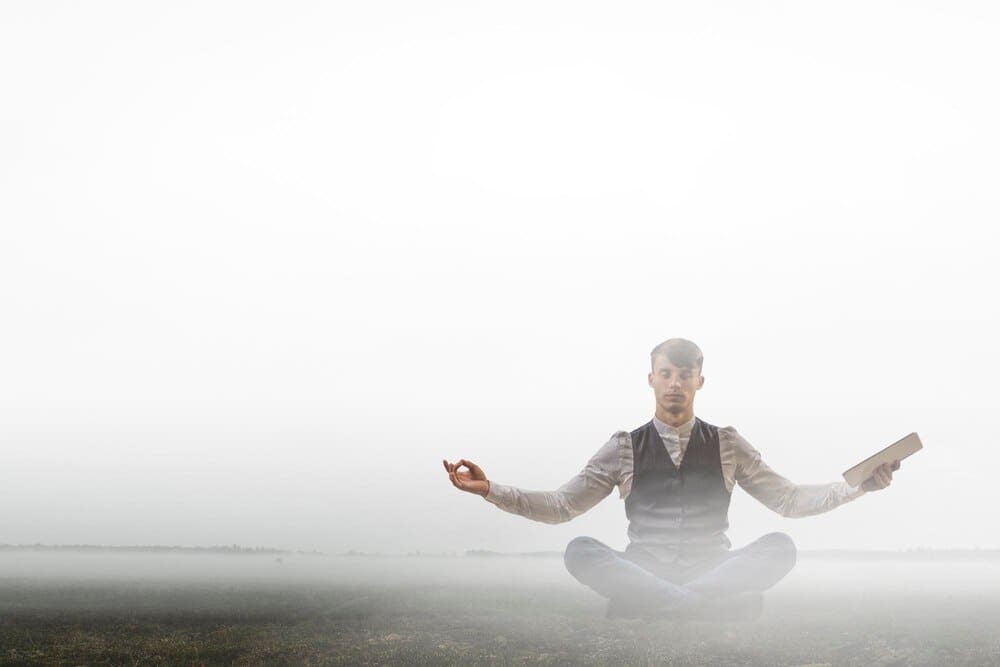For anyone navigating the relentless pace of modern life, the concept of mindfulness offers a powerful antidote to chronic stress, distraction, and digital overload. Far from being an esoteric practice reserved for silent retreats, mindfulness is a practical skill that can be woven into the very fabric of your day, transforming routine moments into opportunities for calm and clarity. The key is to shift the focus from lengthy, formal meditation sessions to brief, intentional check-ins that can be done anywhere, by anyone, at any time. By integrating simple techniques—like focusing on your breath before a meeting or truly tasting your morning coffee—you can fundamentally retrain your brain to be more present, resilient, and engaged with your life as it unfolds, moment by moment.
What is Mindfulness, Really?
At its core, mindfulness is the basic human ability to be fully present, aware of where we are and what we’re doing, and not overly reactive or overwhelmed by what’s going on around us. It is a state of active, open attention on the present. The practice is often defined as “paying attention in a particular way: on purpose, in the present moment, and non-judgmentally.”
While its roots are in ancient Buddhist traditions, mindfulness has been embraced by secular and scientific communities for its profound and evidence-based benefits. Decades of research have shown that a consistent mindfulness practice can physically alter the brain, strengthening areas associated with focus and emotional regulation while calming the regions linked to stress and anxiety.
Practicing mindfulness doesn’t mean your mind will become a blank slate, free of thoughts. Instead, the goal is to become an observer of your thoughts without getting swept away by them. You learn to acknowledge feelings of stress, frustration, or boredom without letting them dictate your actions, creating a crucial space between stimulus and response.
Why Practice Throughout the Day?
Many people feel intimidated by the idea of setting aside 20 or 30 minutes for a formal meditation session. While dedicated practice is beneficial, the “little and often” approach can be even more transformative for building a sustainable habit. Integrating small moments of mindfulness throughout your day offers a more accessible entry point.
This method works by repeatedly interrupting our brain’s “autopilot” mode. We spend much of our day lost in thought—ruminating on the past or worrying about the future. Short, frequent mindfulness exercises act as anchors to the present, gently pulling us back from mental chatter. Over time, these small acts strengthen our “mindfulness muscle,” making presence and calm our new default state, rather than something we have to strive for.
10 Mindfulness Techniques for Your Daily Routine
Here are ten practical, simple techniques you can seamlessly integrate into your existing schedule, no matter how busy you are. The key is consistency, not duration.
1. The Mindful Morning Coffee (or Tea)
Instead of scrolling through your phone while you have your first beverage of the day, turn it into a two-minute sensory experience. Hold the warm mug in your hands and notice the feeling of heat. Close your eyes and inhale the aroma deeply. When you take a sip, do so slowly, paying full attention to the flavor, temperature, and the sensation of the liquid in your mouth. This simple act starts your day with intention rather than distraction.
2. The Three-Breath Reset
This is your emergency brake for stressful moments. Whenever you feel overwhelmed, anxious, or scattered, pause and take three intentional breaths. Inhale slowly and deeply through your nose, feeling your belly expand. Then, exhale just as slowly through your mouth, releasing the tension with the breath. This technique takes less than 30 seconds but is incredibly effective at activating the body’s relaxation response and clearing your mind.
3. Mindful Walking
You can practice mindful walking anytime you are on your feet—whether it’s on your way to the car, down a hallway at work, or during a neighborhood stroll. Tune into the physical sensations of movement. Feel the solid ground beneath your feet with each step. Notice the subtle shift of weight from one leg to the other. Pay attention to the rhythm of your body and the feeling of the air on your skin. This grounds you firmly in the present physical reality.
4. The S.T.O.P. Technique
The S.T.O.P. acronym is a powerful tool for interrupting reactive emotional patterns. When you feel triggered or stressed, practice these four steps:
- Stop: Just pause what you are doing for a moment.
- Take a breath: Focus on one conscious, calming breath.
- Observe: Notice what is happening inside you (your thoughts, feelings, physical sensations) and outside you (your environment). Acknowledge it without judgment.
- Proceed: Having checked in with the present moment, you can now choose to proceed with more awareness and intention.
5. Mindful Listening
In conversations, we often spend more time planning what we’ll say next than truly listening. For your next interaction, practice mindful listening. Give the other person your full attention. Listen not just to their words but to their tone of voice and body language. Resist the urge to interrupt or formulate a reply while they are speaking. This not only makes the other person feel heard but also deepens your connection and understanding.
6. The Body Scan Check-In
When you’re sitting at your desk or waiting in line, take 60 seconds to do a quick body scan. Close your eyes if you can and bring your attention to the top of your head. Slowly scan down through your body—your face, neck, shoulders, arms, chest, back, and legs, all the way to your toes. Simply notice any areas of tension, warmth, or tingling without needing to change anything. This practice reconnects your mind with your body and can help you release unconscious physical stress.
7. Mindful Eating
Transform a meal or even just a snack into a mindfulness exercise. Before you take the first bite, look at your food. Notice its colors, shapes, and textures. As you eat, chew slowly and deliberately. Try to identify all the different flavors. Put your fork down between bites. Mindful eating enhances enjoyment, improves digestion, and helps you recognize your body’s natural hunger and fullness cues more accurately.
8. “Single-Tasking” One Activity
Our brains are not wired for multitasking; they are wired for rapid task-switching, which depletes mental energy and reduces performance. As an antidote, choose one task—like washing the dishes, folding laundry, or writing an email—and commit to doing only that one thing. When your mind inevitably wanders, gently guide your focus back to the sensations of the task at hand. This is a powerful practice for training your attention span.
9. Mindful Observation of Your Environment
This is a simple way to ground yourself anywhere. Pick a natural or ordinary object in your immediate vicinity—a plant, a pen on your desk, a crack in the sidewalk, or a cloud in the sky. For one minute, observe it as if you are seeing it for the very first time. Notice its intricate details: its color, shape, texture, and how the light hits it. This exercise pulls you out of your head and into the rich sensory details of the world around you.
10. The Gratitude Pause
Gratitude is a cornerstone of well-being and a close cousin of mindfulness. Several times a day, take a moment to pause and mentally name three specific things you are grateful for right now. They don’t have to be monumental. It could be the comfort of your chair, the taste of your water, or the fact that the sun is shining. This simple practice shifts your mental focus from what’s lacking to what’s abundant, fostering a more positive and present outlook.
How to Build a Sustainable Mindfulness Habit
The secret to making these practices stick is to start small and be kind to yourself. Don’t try to implement all ten techniques at once. Choose one or two that resonate with you and commit to practicing them for a week. A great strategy is “habit stacking,” where you link your new mindfulness practice to an existing daily habit. For example: “After I brush my teeth, I will practice the three-breath reset.”
Most importantly, release any expectation of perfection. Your mind will wander. That is what minds do. The practice of mindfulness is not about stopping your thoughts; it’s about noticing that they have wandered and gently, without judgment, bringing your attention back. Every time you do this, you are strengthening your ability to be present.
Conclusion: Weaving Mindfulness into the Fabric of Your Life
Mindfulness is not another item to add to your overflowing to-do list. It is a way of being that infuses your existing life with more awareness, purpose, and peace. By practicing these short, simple techniques throughout your day, you build a powerful skill set for navigating challenges with greater resilience and appreciating life’s simple pleasures with more depth. You learn that calm and clarity are not distant destinations, but states of being that are accessible right here, in this very moment.







